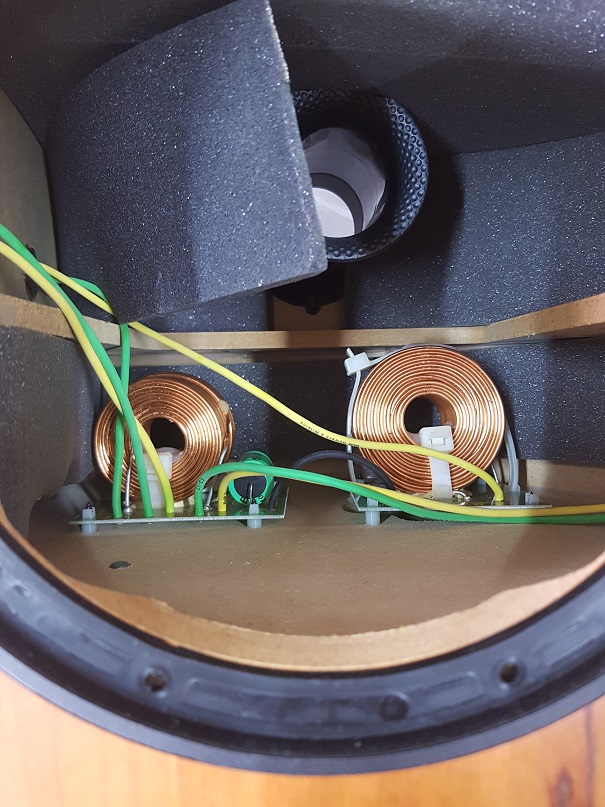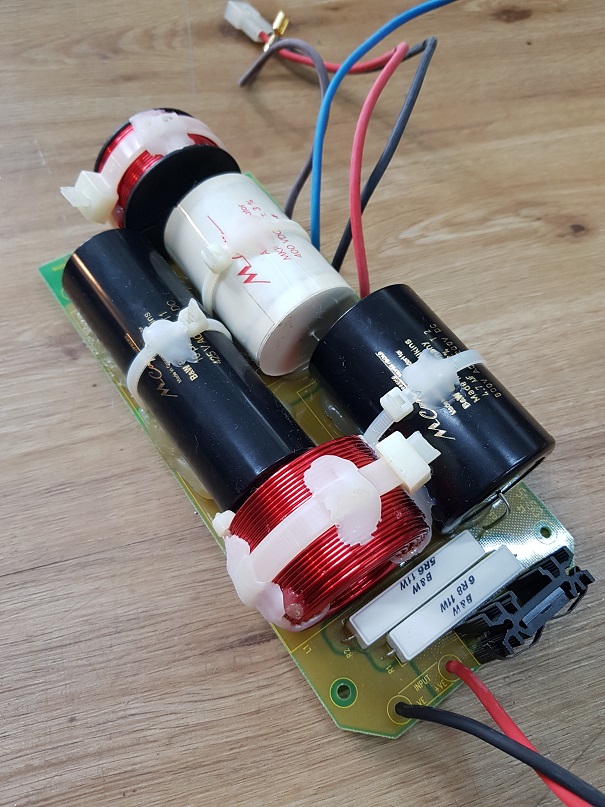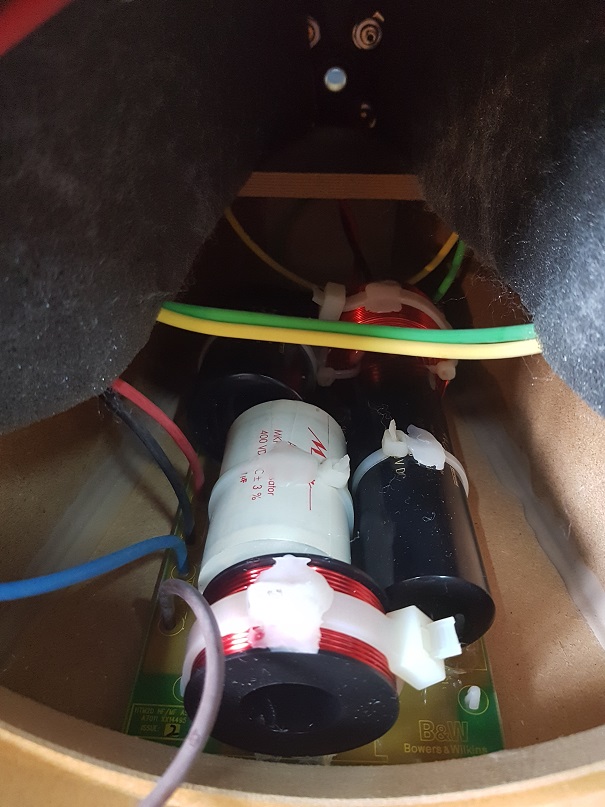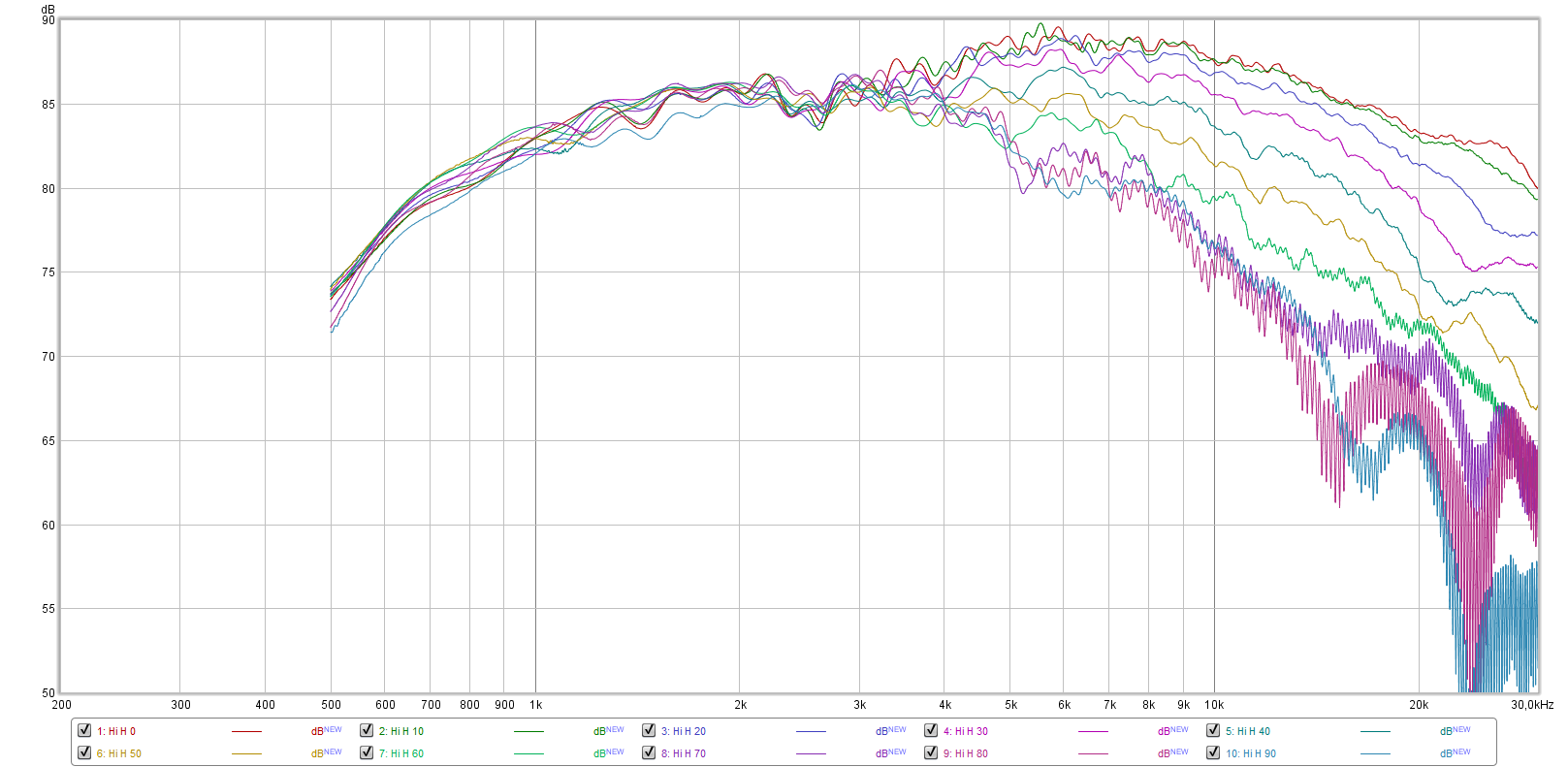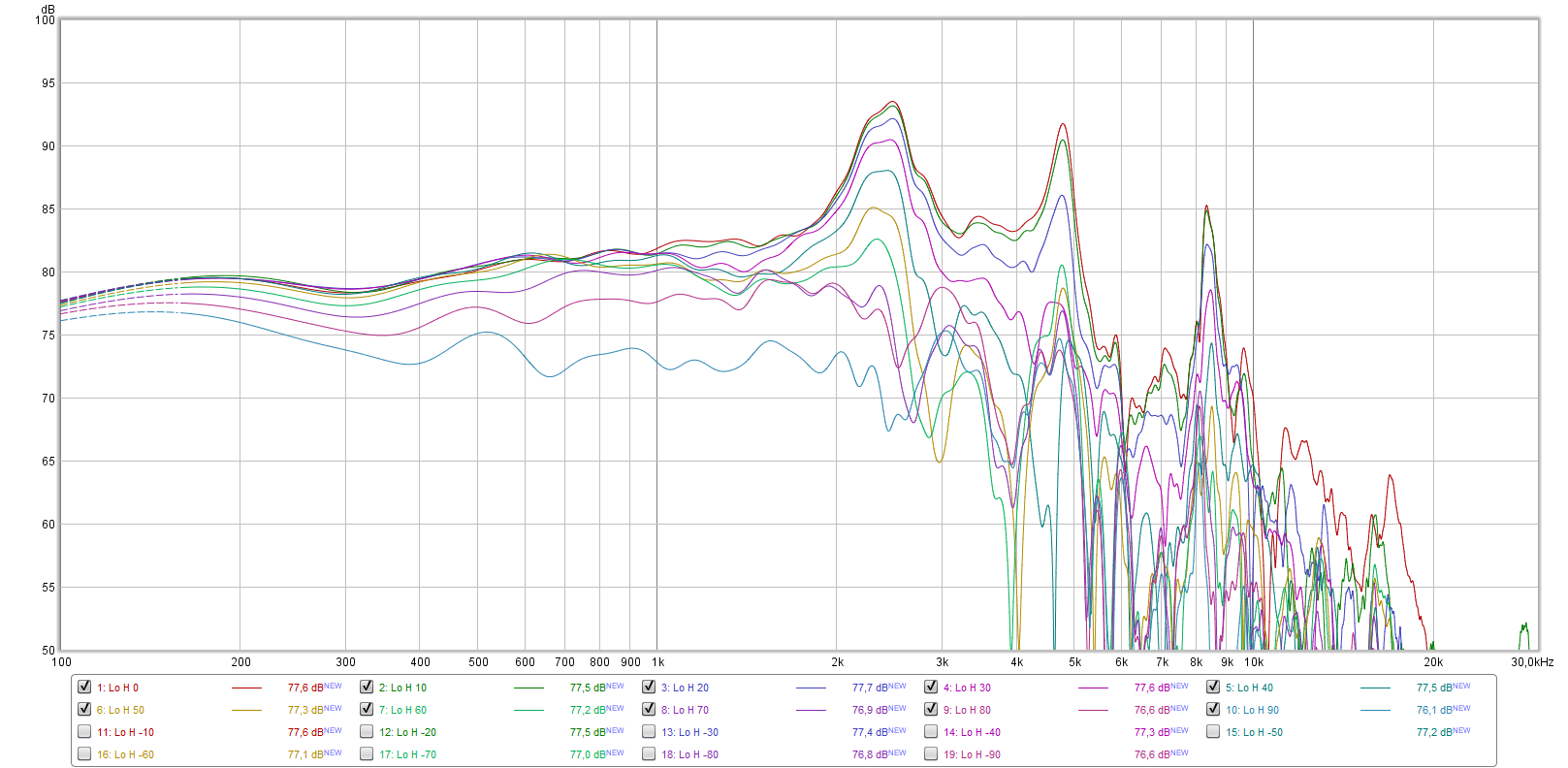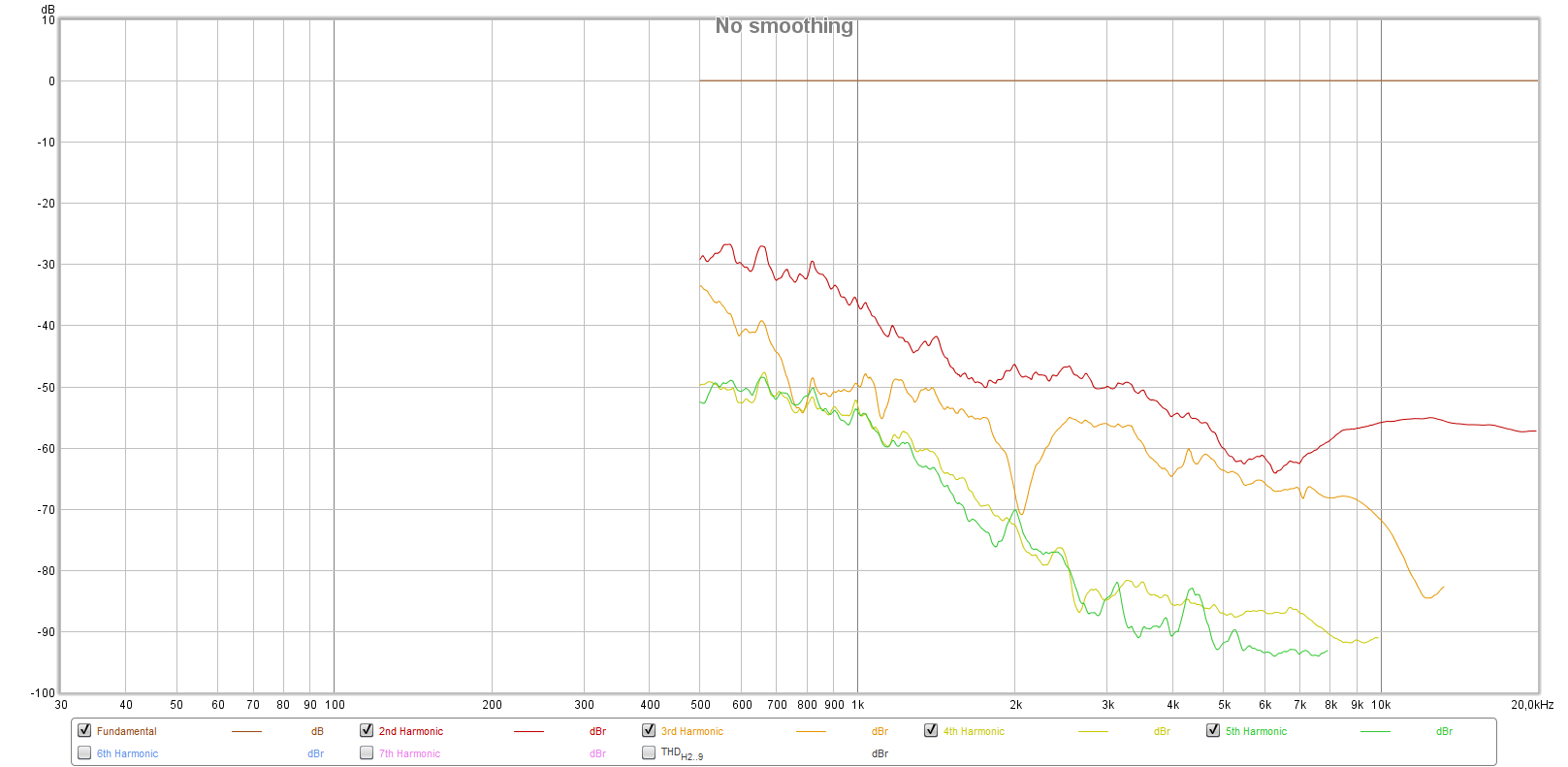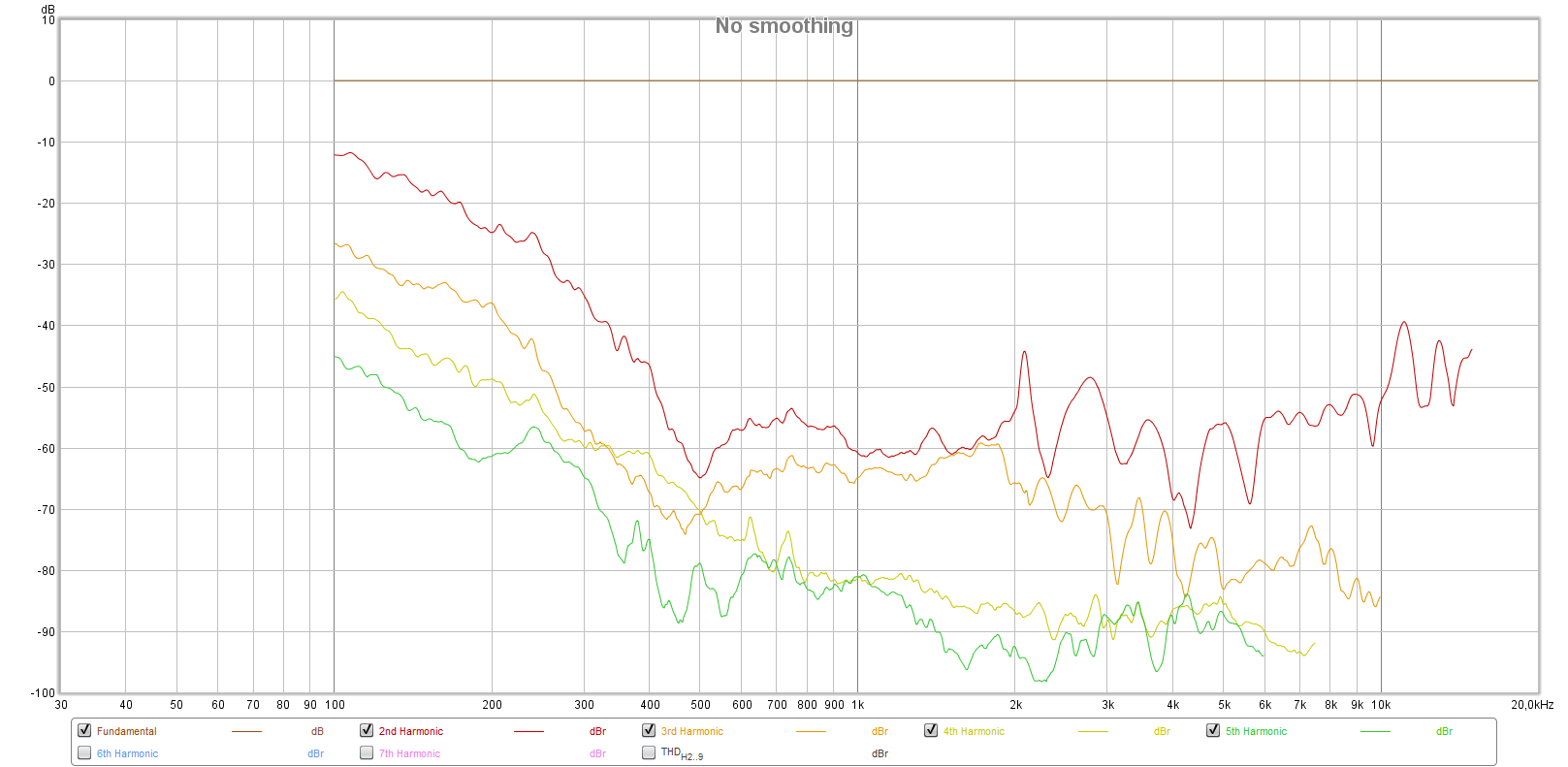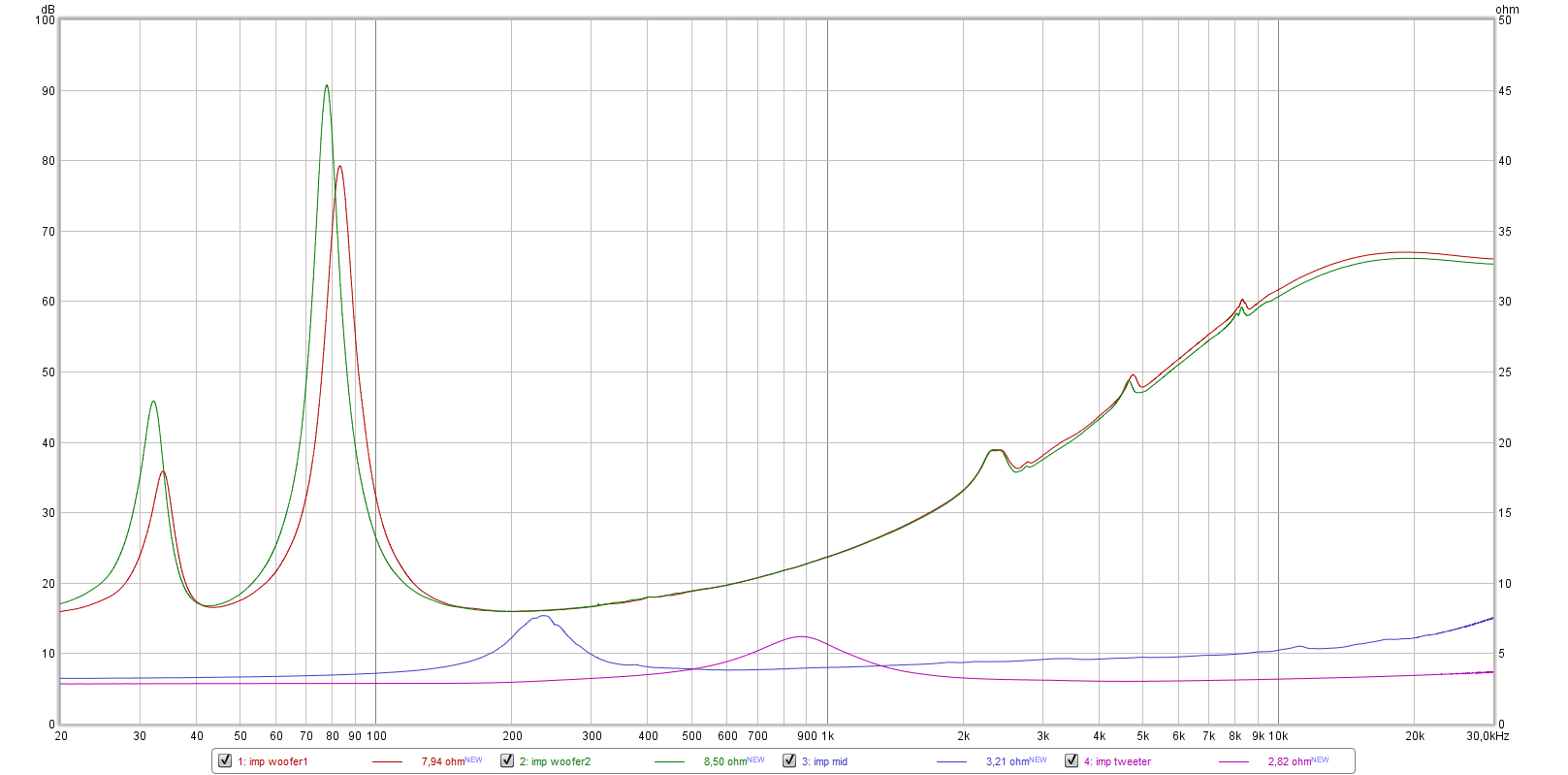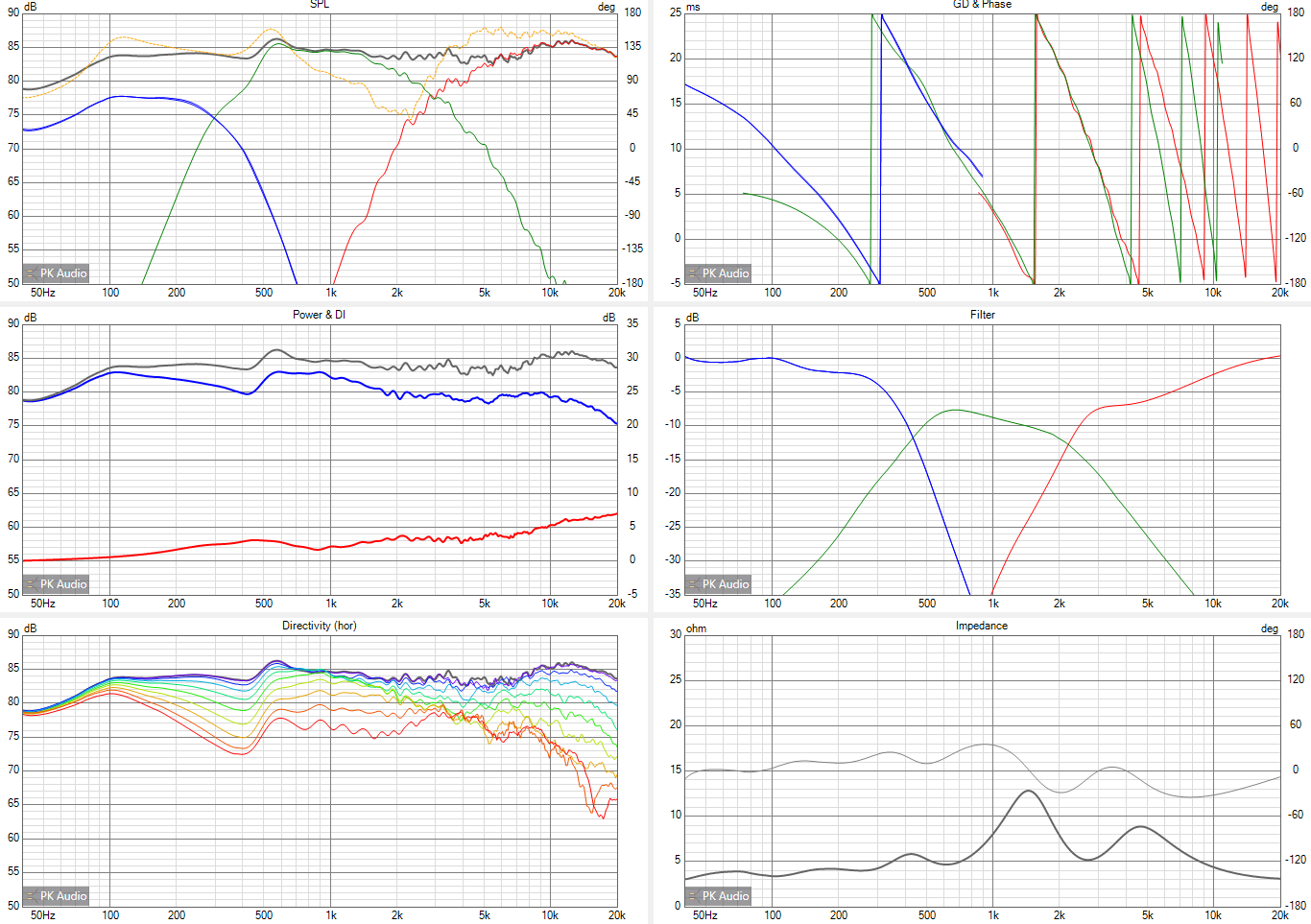B&W HTM2D upgrade
This project is follow up of previous B&W 802D2 upgrade project. 802D2 upgrade proved to be the good step, sound quality improvement was significant and was validated by past 1.5year of listening. Sound character differences between original center speaker and upgraded 80D2 are noticeable so it came time to upgrade HTM2D as well.
Original state analysis
Frequency response measurements were taken with mic distance 80cm, gating 5ms was applied, smoothing 1/12.
....Vituix sixpack with individual drivers measurements and original crossover schematics.
Well, what to say.....this is all just wrong. This design shares all flaws that I measured and identified in B&W 802D2, and here it is all even worse. Woofer filter without RLC, drivers phase tracking, drivers linearisation, 10dB dip at 2kHz,......well this all does not look good at all and no wonder the owner complaint about sound quality a lot.
Good quality crossover parts, unfortunately it is totally useless here and will not bring any improvement.
Upgrade data
Individual drivers measurements:
Frequency response measurements were taken with mic distance 80cm, gating 5ms was applied, no smoothing.
Distortion measurements voltage 2,83V, mic distance 30cm.
Tweeter: typical B&W bullet tweeter horizontal off axis responses, generally good, but it makes crossover design and integration with midrange very difficult. Distortion is very low and suggests it would be good to keep crossover >3kHz and not shallow slope.
Midrange: typically for this very specific design, distortion rises rapidly below 400Hz, and this makes integration with woofers quite difficult. Dual 8inch woofer project, I would normaly try to get crossover lower to 300Hz area to improve horizontal off axis performance, but due to this midrange it is not possible. Off axis performance is generally good but I would chose waveguided tweeter and ~2kHz crossover to mate with this midrange.
Woofer: distortion measurement shows quite unimpressive results, I would expect lower distortion in are below 100Hz.
I use "integration issues", "difficult" in text above a lot, and it is obvious why. The speaker units by themself are good and usable, they have their issues and there are their implementation and usability constraints, and this is normal to any speaker unit, but B&W tried to implement and merge the components that were not meant to work together, it just does not make sense to try to integrate these units to one loudspeaker.
Impedance measurements of each driver are below. We can see differences of woofer tuning between left and right woofer. Tweeter impedance profile is very nice and clean, there are no issues, this is good design. Midrange impedance zoom in shows mild resonances at 2kHz and also higher.
......and the first crossover modelling results


